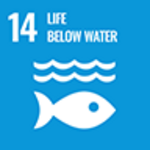

Professor Toshiyuki Wakimoto
Affiliation: Graduate Faculty of Pharmaceutical Sciences, Graduate School Graduate School of Life Science (School of Pharmaceutical Sciences and Pharmacy)
Specialized field: natural product chemistry
Keywords of research: natural drug resources, marine natural products, sponges, biosynthesis, uncultivable microorganisms
Alma mater: Fukui Prefectural Takashi High School
Final academic background: Graduate School of Agricultural and Life Sciences, University of Tokyo
HP address: http://www.pharm.hokudai.ac.jp/tennen/
*This article was originally published in the 4th issue of "Frontiers of Knowledge" and has been re-edited for the web.
What kind of study is natural product chemistry?
Since ancient times, people have used natural organic compounds produced by plants and animals in the natural world as medicines and dyes. With the discovery of penicillin, the search for pharmaceutical resources from microorganisms was actively carried out, and Dr. Satoshi Omura, who discovered an antiparasitic drug produced by actinomycetes, was awarded the 2015 Nobel Prize in Physiology or Medicine. There are still many compounds in natural products with unique structures and actions that are beyond human comprehension, waiting for our discovery. On the other hand, researchers at universities and pharmaceutical companies around the world have searched for pharmaceutical resources using land animals, plants, and microorganisms. Masu. Therefore, chemists aimed at the sea in order to discover new natural medicine resources. Since the 1980s, active searches for pharmaceutical resources contained in marine organisms have resulted in the discovery of many unique natural products that are different from compounds possessed by terrestrial organisms, some of which have already been used as anticancer drugs. It is used as a medicinal product such as
What kind of results can we expect in the future?

Collection survey in Indonesia
(Photo by W. Mangile)
Since natural products are compounds made by living organisms, organisms must have a mechanism for biosynthesizing natural products. It is the biosynthetic enzyme and the gene that encodes that information. However, the information on enzymes and genes involved in the biosynthesis of natural products was unknown for a long time. In recent years, the details are finally coming to light. With the development of gene sequencing technology, it has become relatively easy to obtain the genome information of microorganisms in particular, and biosynthetic genes, which are the blueprints of natural products, have been clarified. Such technological innovations are expected to lead to new developments in the future of natural product chemistry. For example, it is possible to create non-natural natural product-like compounds by functionally modifying biosynthetic enzymes, and to create natural product supply systems that do not rely on natural biological resources by making biosynthetic genes function in appropriate host organisms and producing substances. can. In fact, some success stories have already been reported.
What kind of research are you doing?

Sponges of the genus Theonella (Photo by T. Wakimoto)
We are studying the biosynthesis of sponges, which are the most primitive multicellular animals. As sponges are adherent and immobile animals, they are thought to possess chemical defense mechanisms that protect them from external predators. On the other hand, it has long been suspected that many of the chemoprotective substances (medicine resources) obtained from sponges are biosynthesized by microorganisms that live symbiotically with sponges. In order to find the answer to this question, we are conducting research aimed at identifying the symbiotic producers of sponges. Focusing on sponges belonging to the genera Theonella and Discodermia of the family Theonellidae inhabiting the Izu Islands, we searched for biosynthetic genes and producing bacteria for bioactive substances derived from these sponges. As a result, we clarified that Entotheonella, a commensal bacterium, produces bioactive substances in two types of sponges, Theonella swinhoei and Discodermia calyx. This bacterium belongs to an entirely new family and has the ability to produce a wide variety of medicinal resources. However, it cannot be cultured in the laboratory yet. Recently, it has been found that such difficult-to-cultivate microorganisms account for more than 90% of all microorganisms on earth. In other words, we have already obtained many medicines, such as antibiotics, from the very few microorganisms that can be cultivated. On the other hand, the search for natural products from microorganisms that cannot be cultured has hardly been done so far. In the future, I would like to establish a method for searching for natural products from difficult-to-cultivate microorganisms, which are a huge amount of untapped biological resources on earth.
What do you want next?
So far, natural products chemistry has focused on the search for natural products and their synthesis. In recent years, biosynthetic research has been added as a powerful tool. Starting with compounds, linking them to the enzymes that synthesize them, and then to the genes that encode them, and clarifying the production mechanisms of natural products, we will be able to answer the fundamental question of why living things produce biologically active substances. I feel that the time is approaching. We believe that there is no waste in compounds created by living things that survive the struggle for survival. I think each metabolite has a meaning, but most of the significance is unknown to us today. By understanding why animals and plants in the natural world produce bioactive substances and what kind of survival strategies are used for biosynthesis, we can elucidate the efficacy of not only microorganisms and marine organisms, but also crude drugs and medicinal plants. We believe that more efficient pharmaceutical applications of natural products will become possible.
Reference book
Toshiyuki Wakimoto: Biosynthesis of calyculin "Chemistry of Natural Products -Attractiveness and Prospect-" (Daisuke Uemura ed.) Tokyo Kagaku Doujin p.61 (2016)



















